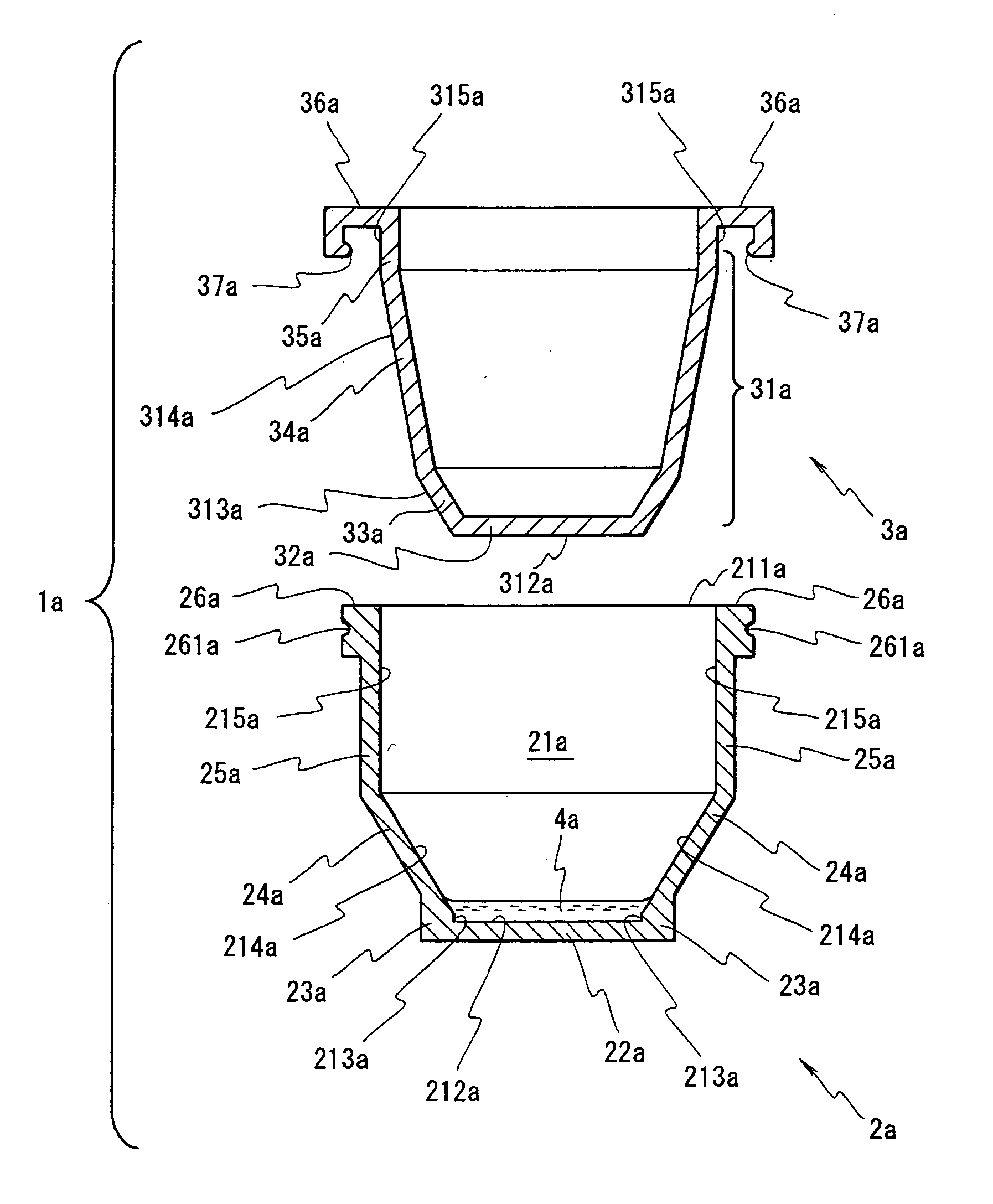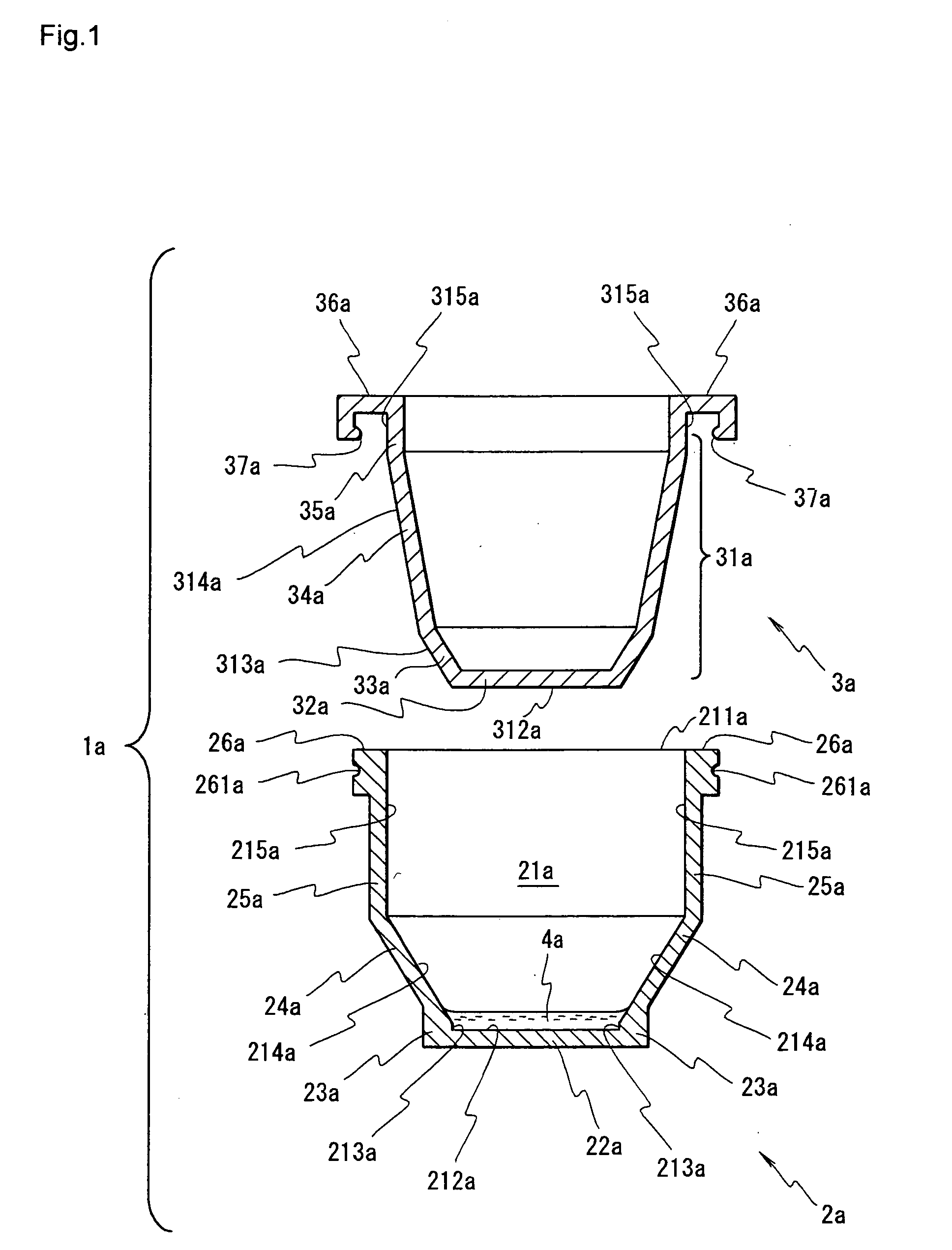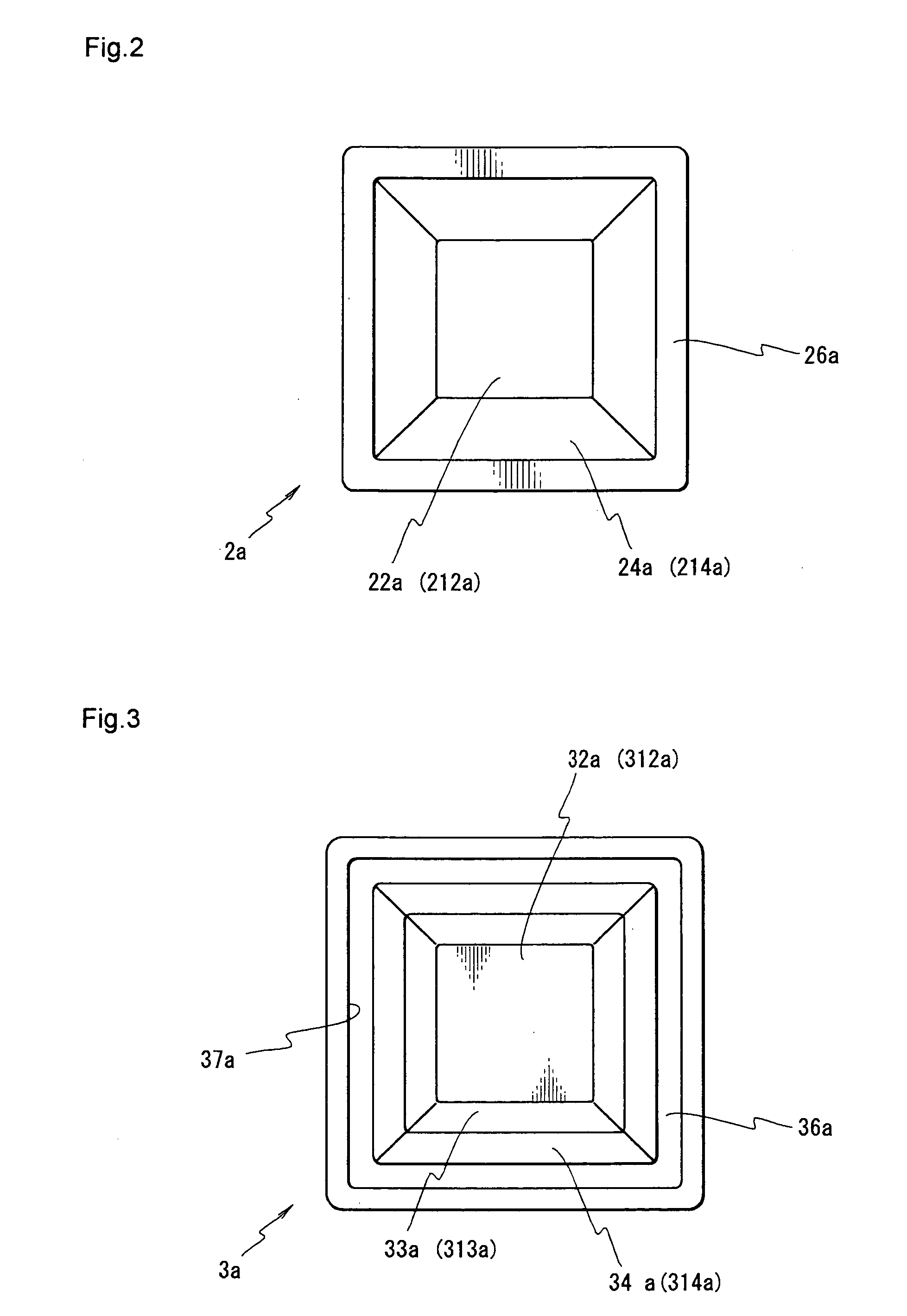Reaction vessel and reaction apparatus
a reaction vessel and reaction technology, applied in the field of reaction vessels and reaction apparatus, can solve the problems of difficult to achieve the goal of minimizing the amount of reaction solution, reaction to a halt, and the time required for pcr by using a conventional pcr reaction apparatus and pcr reaction vessel
- Summary
- Abstract
- Description
- Claims
- Application Information
AI Technical Summary
Benefits of technology
Problems solved by technology
Method used
Image
Examples
first embodiment
[0183]FIG. 1 is a cross section illustrating a first embodiment of the reaction vessel pertaining to the present invention, FIG. 2 is a top view of the reaction vessel main body of the reaction vessel pertaining to the first embodiment, FIG. 3 is a bottom view of the cover member pertaining to the first embodiment, FIG. 4 is a cross section illustrating a state in which the cover member is mounted on the reaction vessel main body in the reaction vessel pertaining to the first embodiment, FIG. 5 is a simplified partial cross section illustrating a first embodiment of the reaction apparatus pertaining to the present invention, and FIGS. 6(i) to (iii) are diagrams illustrating example layouts of the optical fibers.
[0184] As shown in FIGS. 1 and 4, the reaction vessel 1a pertaining to this embodiment comprises a reaction vessel main body 2a and a cover member 3a.
[0185] As shown in FIGS. 1 and 2, the reaction vessel main body 2a has a bottom plate 22a that is quadrangular in plan view,...
second embodiment
[0238]FIG. 7 is a cross section illustrating a second embodiment of the reaction vessel pertaining to the present invention; FIG. 8(i) is a cross section illustrating a state in which the cover member is mounted on the reaction vessel main body in the reaction vessel pertaining to the second embodiment; FIG. 8(ii) is a cross section illustrating a state in which the nozzle tip has been mounted on the cover member covering the reaction vessel main body in the reaction vessel pertaining to the second embodiment; FIG. 9 is a partial cross section illustrating a second embodiment of the reaction apparatus pertaining to the present invention; FIG. 10(i) is an exploded oblique view illustrating the structure of the first temperature controller and second temperature controller provided to the reaction apparatus pertaining to the second embodiment; FIG. 10(ii) is an oblique view illustrating the state of the first temperature controller and second temperature controller during a reaction; ...
PUM
 Login to View More
Login to View More Abstract
Description
Claims
Application Information
 Login to View More
Login to View More - R&D
- Intellectual Property
- Life Sciences
- Materials
- Tech Scout
- Unparalleled Data Quality
- Higher Quality Content
- 60% Fewer Hallucinations
Browse by: Latest US Patents, China's latest patents, Technical Efficacy Thesaurus, Application Domain, Technology Topic, Popular Technical Reports.
© 2025 PatSnap. All rights reserved.Legal|Privacy policy|Modern Slavery Act Transparency Statement|Sitemap|About US| Contact US: help@patsnap.com



